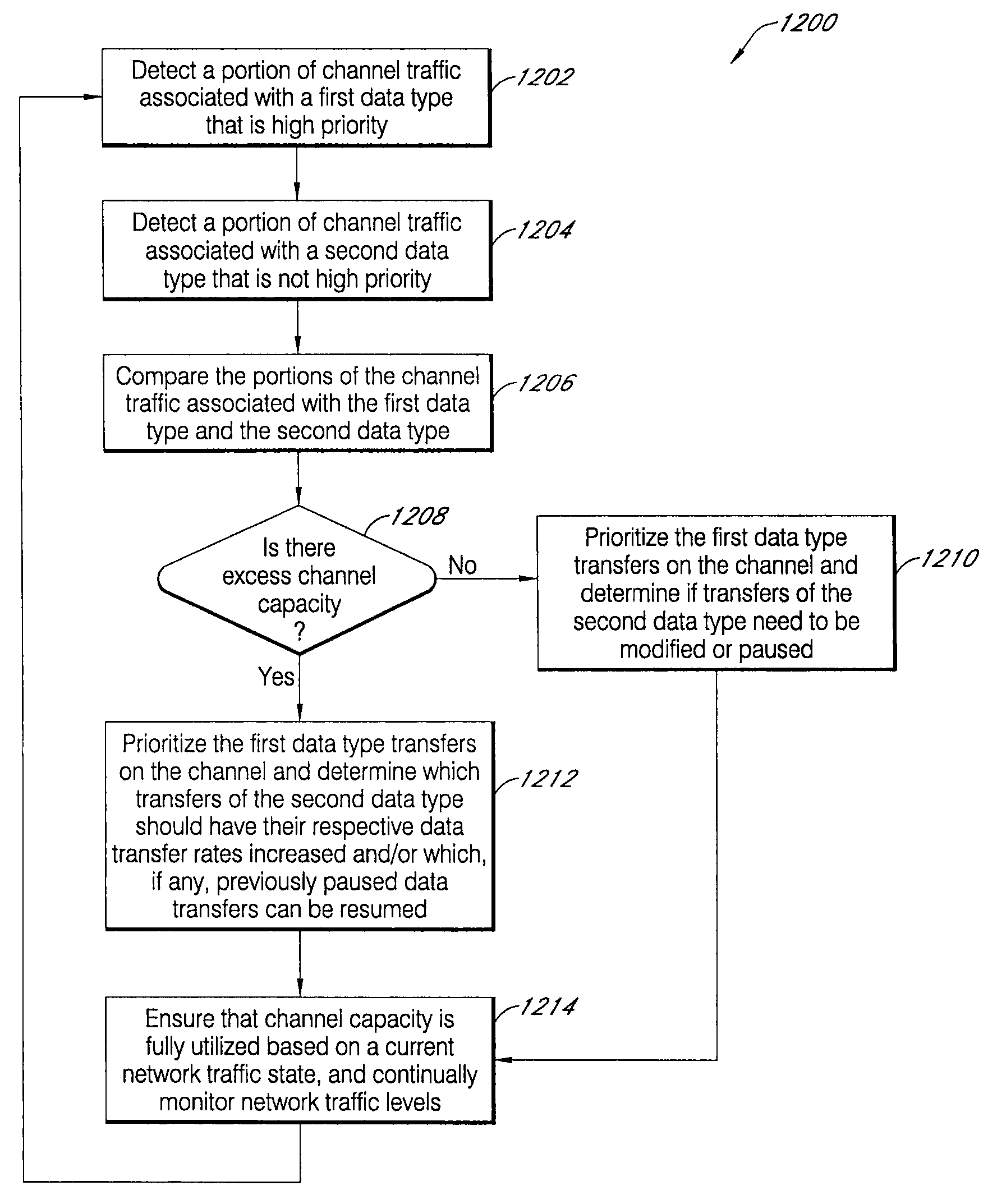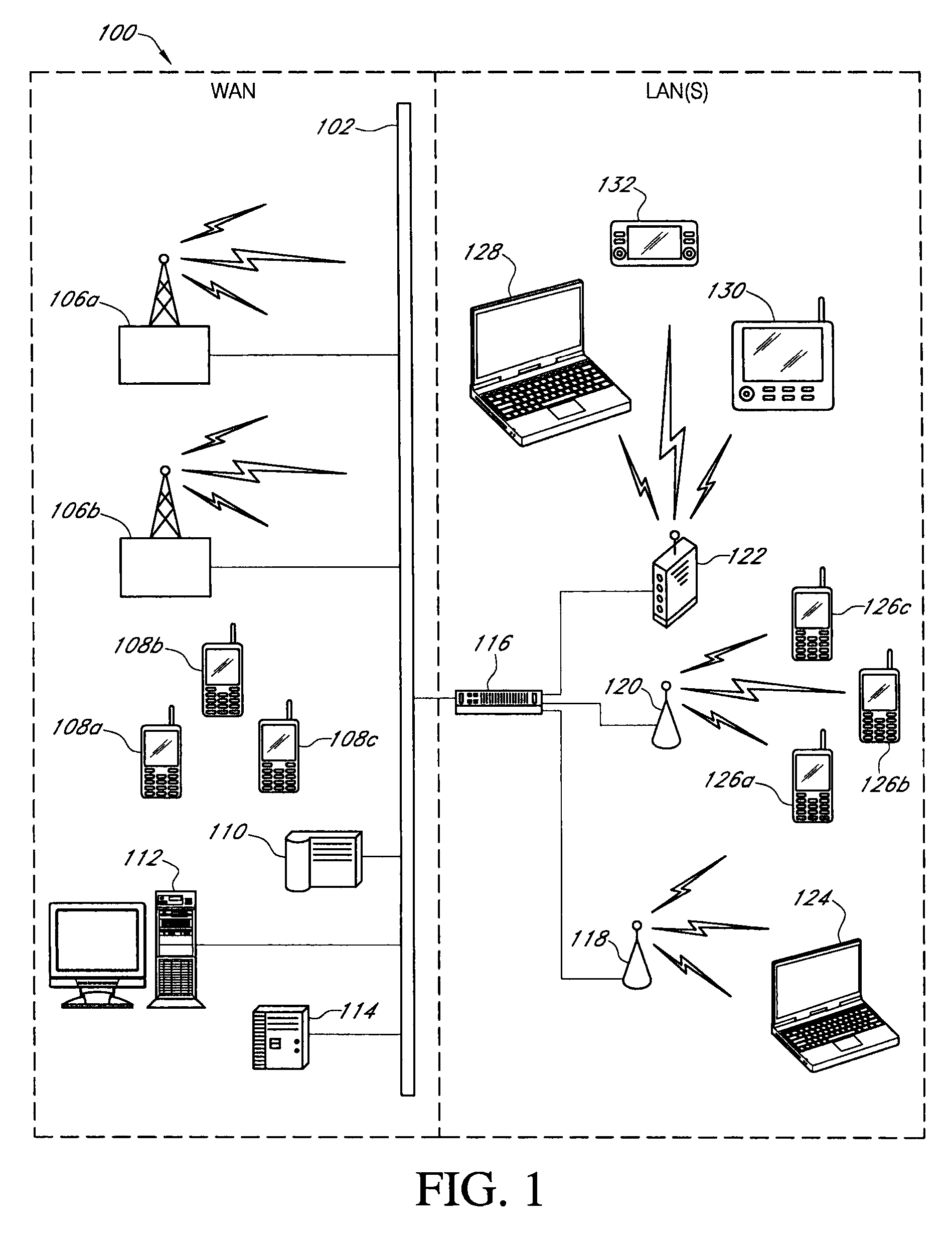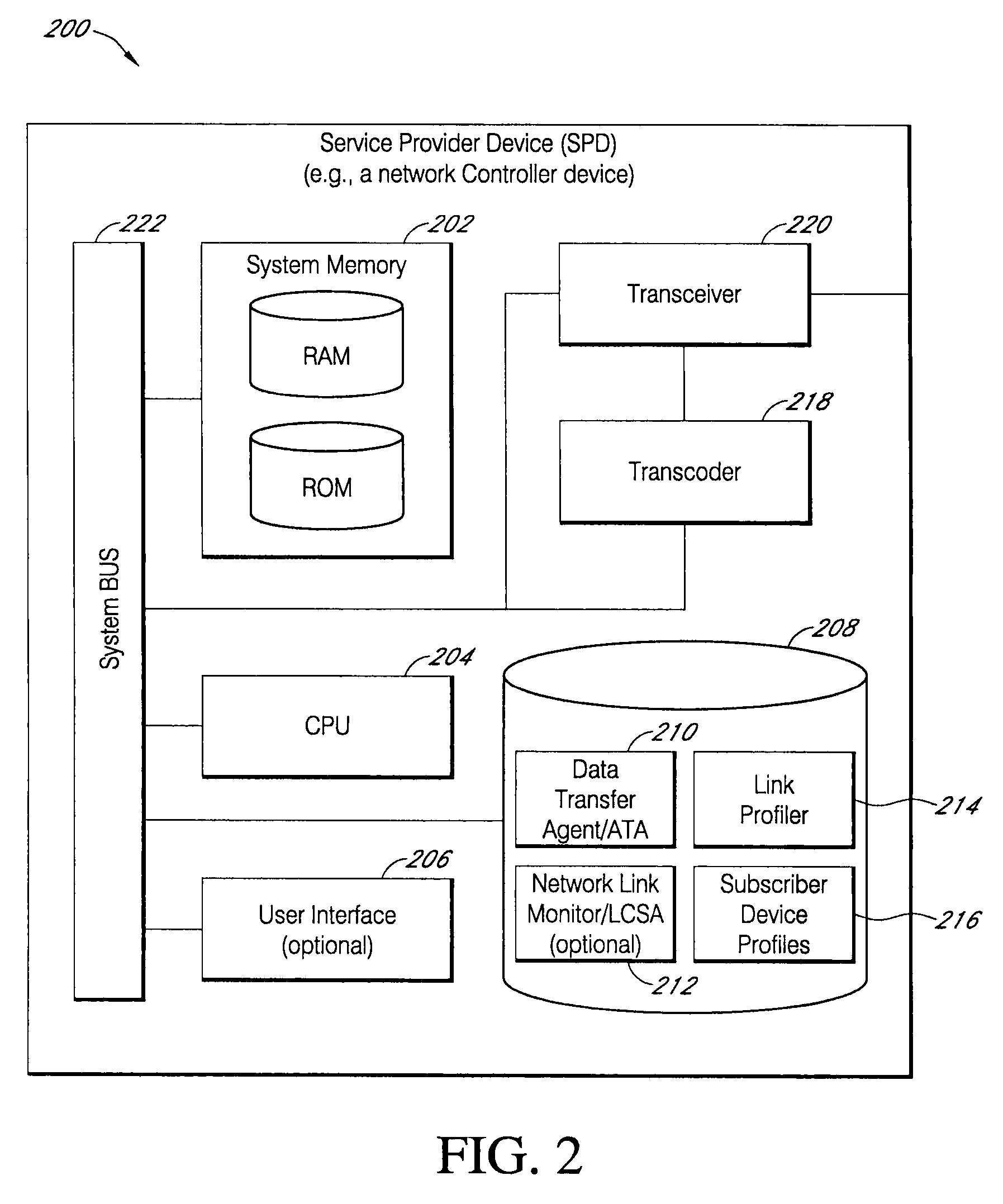Systems and methods for optimizing channel resources by coordinating data transfers based on data type and traffic
a technology of data transfer and channel resources, applied in the field of system and method for optimizing channel resources by coordinating data transfers based on data type and traffic, can solve the problems of almost all modern-day networks susceptible to congestion or degradation, and the provider has struggled to provide sufficient communications infrastructure, so as to reduce the data transfer rate
- Summary
- Abstract
- Description
- Claims
- Application Information
AI Technical Summary
Benefits of technology
Problems solved by technology
Method used
Image
Examples
Embodiment Construction
[0038]In accordance with an exemplary embodiment of the present invention, FIG. 1 illustrates a networked computing system 100 including various wireline and wireless computing devices that may be utilized to implement any of the network traffic and radio communications quality monitoring or data content transfer optimization processes associated with various embodiments of the present invention. The specific network configuration shown in FIG. 1 is intended to give an example of a high-level computing system capable of facilitating various network communications processes of the present invention, all of which are further described herein. As would be understood by those skilled in the Art, many network configuration and topology changes could be made to the networked computing system 100 of FIG. 1, without departing from the spirit and scope of the present invention.
[0039]In an embodiment, the networked computing system 100 may include, but is not limited to, a group of service pr...
PUM
 Login to View More
Login to View More Abstract
Description
Claims
Application Information
 Login to View More
Login to View More - R&D
- Intellectual Property
- Life Sciences
- Materials
- Tech Scout
- Unparalleled Data Quality
- Higher Quality Content
- 60% Fewer Hallucinations
Browse by: Latest US Patents, China's latest patents, Technical Efficacy Thesaurus, Application Domain, Technology Topic, Popular Technical Reports.
© 2025 PatSnap. All rights reserved.Legal|Privacy policy|Modern Slavery Act Transparency Statement|Sitemap|About US| Contact US: help@patsnap.com



